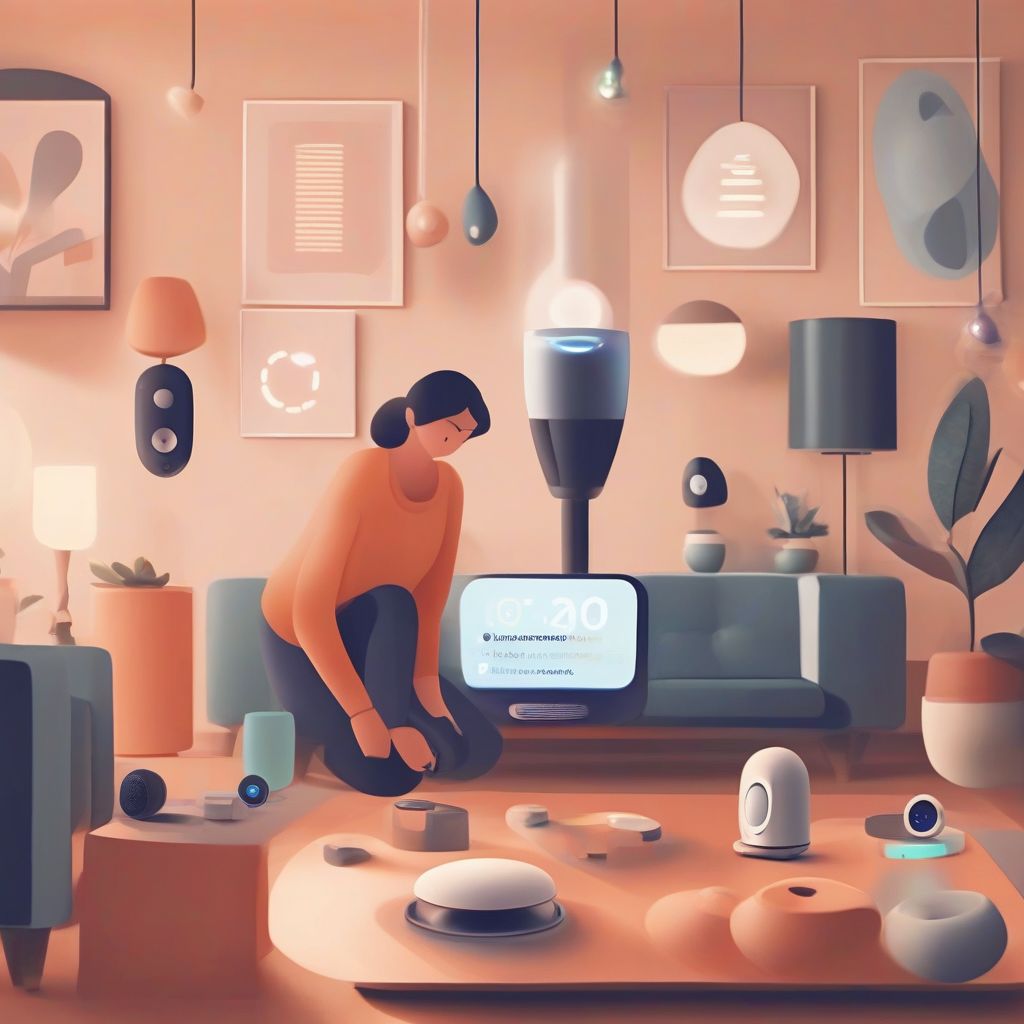Imagine waking up to the smell of freshly brewed coffee, your favorite playlist filling the air, and the temperature perfectly adjusted – all without lifting a finger. That’s the magic of a smart home, where convenience meets technology. But before you can enjoy this futuristic lifestyle, you need to know how to set up and configure your new smart home devices.
Don’t worry, it’s easier than you think! This comprehensive guide will walk you through the process, demystifying the world of smart homes and empowering you to create a personalized haven. Whether you’re a tech enthusiast or a beginner, consider this your roadmap to a seamless smart home experience.
Choosing the Right Smart Home Devices
Before diving into the setup, let’s pause and consider your needs and preferences.
Identify Your Needs
What do you want to achieve with your smart home?
- Enhanced security? Think smart locks, security cameras, and motion sensors.
- Increased comfort? Smart thermostats, lighting systems, and motorized blinds can elevate your living experience.
- Effortless entertainment? Smart speakers, streaming devices, and even smart TVs can transform your home into an entertainment hub.
Consider Compatibility
Not all smart home devices play well together. Before you fall in love with a specific brand, ensure it’s compatible with your existing ecosystem.
- Voice Assistants: Are you loyal to Amazon Alexa, Google Assistant, or Apple HomeKit? Your choice of voice assistant can influence your device selection.
- Connectivity: Most smart home devices rely on Wi-Fi, but some might use Bluetooth or Zigbee. Ensure your home network can accommodate your chosen devices.
Research and Compare
Take the time to research different brands and models, comparing features, user reviews, and price points to find the perfect fit for your needs and budget.
Setting Up Your Smart Home Devices: A Step-by-Step Guide
Now that you have your smart home devices ready, let’s get them up and running.
1. Download the App
Most smart home devices are controlled through a dedicated mobile app. Download the app recommended by the manufacturer from either the App Store (iOS) or Google Play Store (Android).
2. Create an Account
Once you’ve downloaded the app, create an account. You’ll typically need to provide an email address, password, and sometimes additional information like your name and location.
3. Connect to Your Wi-Fi
Now, it’s time to connect your device to your home’s Wi-Fi network. Follow the in-app instructions, selecting your Wi-Fi network name and entering the password when prompted.
4. Customize Settings
With your device successfully connected, take some time to personalize the settings to your liking. This might involve adjusting sensitivity levels on motion sensors, setting schedules for smart lights, or creating custom routines.
Connecting Your Devices: Creating a Unified Smart Home Ecosystem
While individual smart home devices offer convenience, the real magic happens when they work together seamlessly. This is where a smart home hub or voice assistant shines.
Smart Home Hubs
A smart home hub acts as the central command center, allowing you to control multiple devices from different manufacturers through a single app or interface. Popular options include Samsung SmartThings, Hubitat Elevation, and Amazon Echo (4th generation).
Voice Assistants
Voice assistants like Amazon Alexa, Google Assistant, and Apple Siri take convenience to the next level, enabling you to control your devices with simple voice commands. Imagine saying, “Alexa, turn on the living room lights,” and watching it happen like magic.
IFTTT and Other Automation Platforms
If you want to take your smart home automation to the next level, platforms like IFTTT (If This Then That) allow you to create intricate automations involving multiple devices. For example, you could set it up so that when your smart doorbell detects motion, your smart lights turn on, and your security camera starts recording.
 Setting Up Smart Home Devices
Setting Up Smart Home Devices
Troubleshooting Common Smart Home Device Issues
Even with careful planning and execution, you might encounter some hiccups along the way. Here are some common issues and how to troubleshoot them:
- Device Not Connecting: Double-check your Wi-Fi password, ensure the device is in range of your router, and try power cycling both your device and router.
- App Not Responding: Force close and reopen the app, check for updates, or try reinstalling the app.
- Voice Commands Not Working: Ensure your voice assistant is set up correctly, the device is linked to your assistant, and you’re using the correct wake word and commands.
- Connectivity Issues: If you’re experiencing frequent disconnections, consider investing in a Wi-Fi extender or mesh network system for better coverage.
Conclusion: Embrace the Future of Living with a Smart Home
Setting up and configuring new smart home devices might seem daunting at first, but with this guide, you’re well-equipped to create a personalized smart home that caters to your needs. Remember to start with your needs, choose compatible devices, and don’t hesitate to explore the world of automation for a truly connected living experience.
As a nutritionist and meal prep coach, I’m passionate about simplifying healthy living, and a smart home is no exception. Embrace the future of convenience and create a home that works smarter, not harder, just like your approach to wellness.
What are your biggest challenges when it comes to setting up smart home devices? Share your thoughts and experiences in the comments below!
[amazon bestseller=”Smart Home Hub”]
